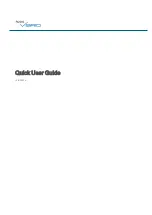
THIS KIT CONTAINS
1x wooden enclosure (7 pieces)
1x ISD1820 sound module
1x 2*AAA battery holder
1x 1/8 inch female jack socket
2x ON/OFF toggle switches
2x momentary push buttons
1x 5539 photoresistor
1x 470K resistor
TOOLS NEEDED
Soldering iron and solder
Set of pliers : cutting, flat and
stripping
Hot glue gun or superglue
Flat headed screwdriver and
small wood file*
* : optional
NOT INCLUDED IN THIS KIT
2x AAA batteries, 1/8 inch audio cable and monitoring system (earbuds,
amplified speaker, etc.)
A FEW TIPS FOR BUILDING THIS KIT :
- Find a suitable place to solder : quiet with a large clean surface. Because of
solder fumes, keep the room well ventilated.
- Read all the instructions before starting. Make sure you have all the
components and tools listed above. Read the instructions of the tools you will
use, such as the soldering iron.
- Solder the component on the back of the sound module, as shown on the
schematics.
- Before soldering, mount the components on the enclosure faceplate. This will
help you cut the right length needed for the wires. Wires that are too long can
be as inconvenient as wires that are too short !
- Solder wires at a 90° angle to the components legs to save space in the
enclosure.
- Depending on your soldering skills, you might want to watch tutorial videos
on soldering and practice on old components.
- You can test your circuit between steps, but remember to always remove the
batteries when soldering !
Watch the video tutorial :
www.jeanbaptisteleveque.fr « Instruments »
Ready ? Let's go !
Thank you for purchasing this Loopcard kit, the do-it-yourself lo-fi looper.
Record your voice, an instrument, the neighbor's dog or any sound
with the built-in microphone !
Play back and loop your recordings with the PLAY and LOOP functions !
Create new sounds with the SPEED function and control the speed of
recording and playback with the light sensor !
The Loopcard is an electronic musical instrument designed by
Jean-Baptiste Lévêque, around the ISD1820 sound recording module.
This document will provide all the information needed to build and use
your Loopcard. For any inquiries, feel free to write at :
leveque.jeanbaptiste@gmail.com
THIS KIT SHOULD NOT BE BUILT WITHOUT ADULT SUPERVISION
A word of the designer
With the Loopcard, I wanted to design an original and open instrument,
both easy to build and to use.
Its minimal interface was designed to be as intuitive as possible. It offers a
chance to experience the building blocks of electronic music: sampling,
looping and live sound manipulation.
THE DIY LO-FI
AUDIO LOOPER
AUDIO : The audio output. You can plug in headphones, speakers, etc.
This is a mono output. Sound will only come out of the left side on a stereo
system.
MIC : The built-in microphone. Talk in it or point it toward the sound source
you want to record.
REC : Hold this button and talk in the microphone to record. Recording
stops when you let go of the button or when memory is full (10 seconds
approx.). Each new recording will erase the previous one (no overdubbing).
PLAY : Hold this button to play back your recording.
LOOP : Turn this switch on to play your recording in an endless loop. Keep
this switch off when recording or when you are not using your Loopcard.
SPEED : Turn this switch on to activate the light sensor (photoresistor) on
the right. The amount of light this sensor gets will change both the
playback and recording speed. Lot of light will speed up playback and
shorten recording time (but with a better sound quality). Less light will slow
down playback and lengthen recording time (but with a poorer sound
quality).
Try waving your hand in front of the sensor, obscuring it during playback
and recording to create really weird sounds !
HOW TO USE YOUR LOOPCARD




















